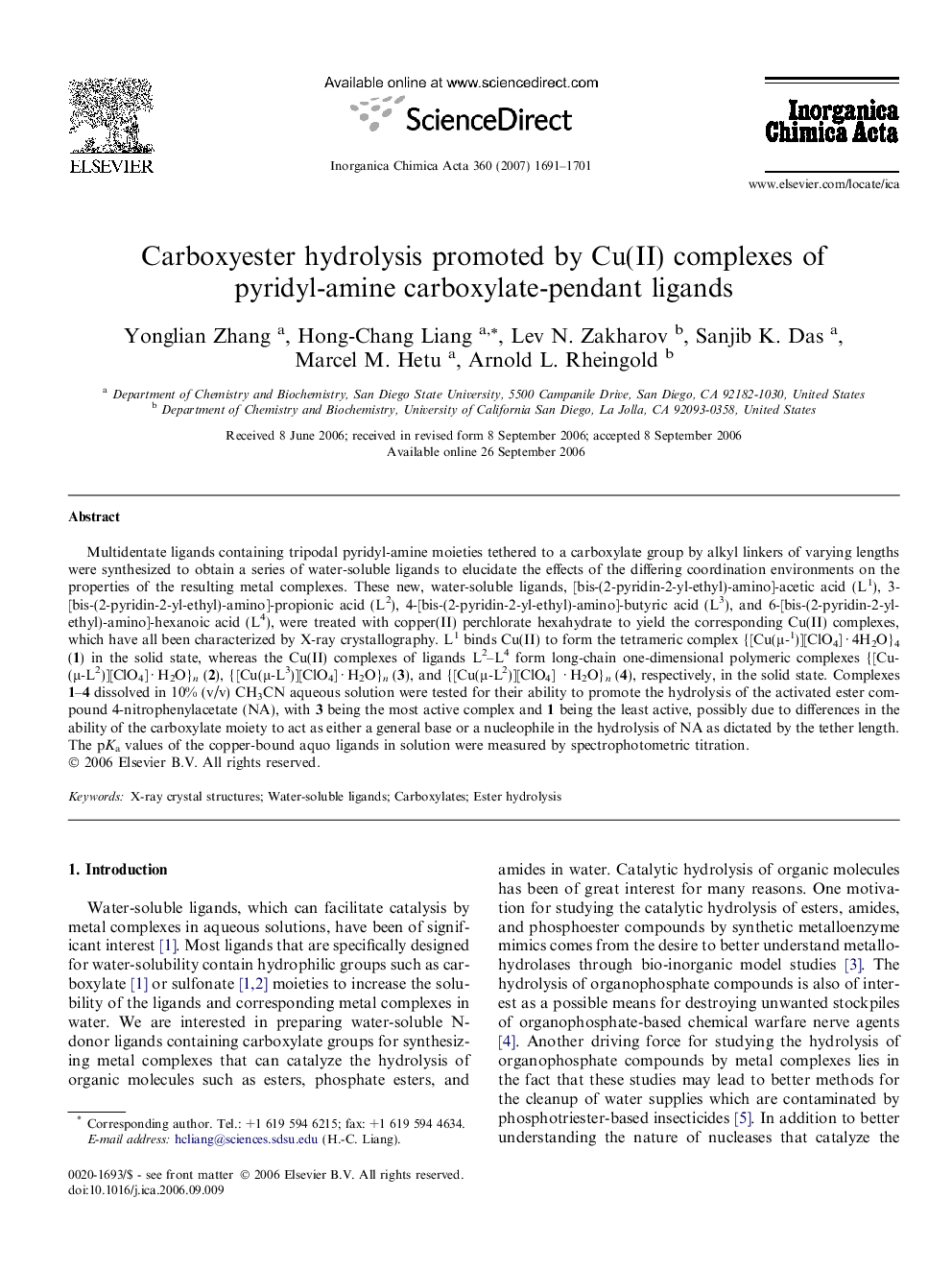| کد مقاله | کد نشریه | سال انتشار | مقاله انگلیسی | نسخه تمام متن |
|---|---|---|---|---|
| 1311694 | 975343 | 2007 | 11 صفحه PDF | دانلود رایگان |

Multidentate ligands containing tripodal pyridyl-amine moieties tethered to a carboxylate group by alkyl linkers of varying lengths were synthesized to obtain a series of water-soluble ligands to elucidate the effects of the differing coordination environments on the properties of the resulting metal complexes. These new, water-soluble ligands, [bis-(2-pyridin-2-yl-ethyl)-amino]-acetic acid (L1), 3-[bis-(2-pyridin-2-yl-ethyl)-amino]-propionic acid (L2), 4-[bis-(2-pyridin-2-yl-ethyl)-amino]-butyric acid (L3), and 6-[bis-(2-pyridin-2-yl-ethyl)-amino]-hexanoic acid (L4), were treated with copper(II) perchlorate hexahydrate to yield the corresponding Cu(II) complexes, which have all been characterized by X-ray crystallography. L1 binds Cu(II) to form the tetrameric complex {[Cu(μ-1)][ClO4] · 4H2O}4 (1) in the solid state, whereas the Cu(II) complexes of ligands L2–L4 form long-chain one-dimensional polymeric complexes {[Cu(μ-L2)][ClO4] · H2O}n (2), {[Cu(μ-L3)][ClO4] · H2O}n (3), and {[Cu(μ-L2)][ClO4] · H2O}n (4), respectively, in the solid state. Complexes 1–4 dissolved in 10% (v/v) CH3CN aqueous solution were tested for their ability to promote the hydrolysis of the activated ester compound 4-nitrophenylacetate (NA), with 3 being the most active complex and 1 being the least active, possibly due to differences in the ability of the carboxylate moiety to act as either a general base or a nucleophile in the hydrolysis of NA as dictated by the tether length. The pKa values of the copper-bound aquo ligands in solution were measured by spectrophotometric titration.
Cu(II) complexes of new, water-soluble ligands, [bis-(2-pyridin-2-yl-ethyl)-amino]-acetic acid (L1), 3-[bis-(2-pyridin-2-yl-ethyl)-amino]-propionic acid (L2), 4-[bis-(2-pyridin-2-yl-ethyl)-amino]-butyric acid (L3), and 6-[bis-(2-pyridin-2-yl-ethyl)-amino]-hexanoic acid (L4), were synthesized and structurally characterized. Kinetics data of the hydrolysis of NA by the copper(II) complexes suggest that the carboxylate moieties may be involved in the hydrolysis of the substrate.Figure optionsDownload as PowerPoint slide
Journal: Inorganica Chimica Acta - Volume 360, Issue 5, 1 April 2007, Pages 1691–1701